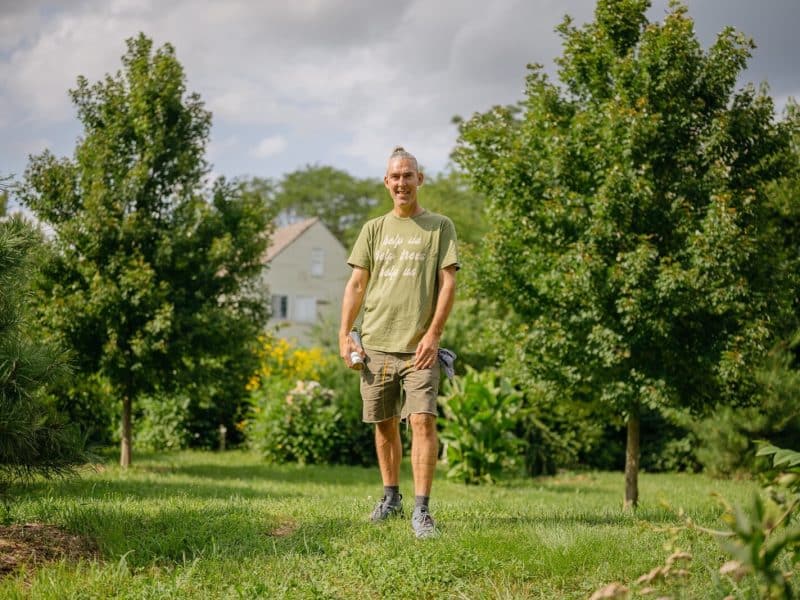From Motown to Gotown: Detroit can lead the development of smart city tech
Tim Johnson, director of transportation initiatives at NextEnergy, argues that there is no better place to be than Detroit when it comes to developing the technologies that will make our cars, buildings, and cities smarter and more efficient.

In 1956, the Eisenhower Interstate Highway system was envisioned and born as a means to transport the people and products of the U.S. from coast to coast in a consistent, controlled, and safe manner. Its design (with an obvious nod to its namesake, the former “Supreme Commander” of the WWII Allied victory) was also meant to quickly move military material in the event of a foreign intrusion. This writer could argue that with its essential role of enabling and accelerating our culture and economy – which became the real weapons of choice in the dismantling of the Berlin Wall, and ultimately the Soviet Union – the Interstate greatly contributed to the end of the Cold War.
Now fast forward 60 years. The U.S. (and all of the developed world) is in the midst of a transformative period of profound and exponential development, a consequence for which no end is in sight as it relates to the economic and societal sector heavyweights of transportation, information, and energy. While the Interstate system of the mid-20th century was built of concrete (all told, it took over 27 years to complete), today’s Interstate system will be re-baked from a recipe using these three sectors blended in the “mega-trends” mixing bowl: creating ubiquitous connectivity/information, shared-economy willingness, and energy options.
While each trend on its own is worthy of discussion and conferences (and there are countless of these), it is in the overlap space where the most potential exists for a paradigm shift of our daily lives – one that we haven’t experienced since the post-World War II era. Here are a few “what if” scenario examples from this overlap space that illustrates what the current technologies now enable:
What if…a fleet of employee electric vehicles were plugged into an office building, and the vehicles and building could communicate with each other to manage charging, helping the building owner or utility company manage peak loads?
What if…your car could communicate with your house and your thermostat to dynamically change set points on your home based on variations in your location and your schedule to reduce your energy bills?
What if…your car interacted with a parking deck as you approached a busy area, telling you exactly where the parking spots were, to save you the time and hassle of aimlessly driving around?
What if…your car could automatically interact with your garage doors or security system and house lighting to provide you and your family with a greater sense of safety and convenience?
What if…instead of parking your vehicle at work all day, the technology and e-commerce functions were in place to rent it to others to supplement your income and provide safe and reliable transportation to those who need it?
What makes this all of this so interesting and important (and don’t forget ironic) for the Motor City – the city most profoundly impacted (good and bad) by the Interstate system – is that many passionate people and entities are feverishly working to establish Detroit and southeast Michigan as the epicenter of this new mixing bowl.
To wit, leading national voices from the public and private sector were recently convened at NextEnergy for the V2B Mashup (vehicle-to-building) workshop held at its three-acre campus in Midtown Detroit. Leaders from the federal government, auto, energy, building, telecommunications, and connected technology sectors provided their perspectives on why this overlap space is fundamentally and rapidly changing the way individuals and entities make decisions on how/when/why they move/purchase/sell people/goods/energy/information. The outcome of the event has been to catalyze conversations with the various stakeholders (from both the “V” and “B” side of the equation) to develop the business models that will encourage the growth and value propositions of these enabling technologies.
This event was strategically located in Detroit because of its unique blend of unrivaled engineering talent, history of innovation, edgy design and cultural icons, with the present reality of a geography, demographic, and public/private partnerships all primed to utilize the mix of state-of-the-art (and tired) infrastructure with population density in venues that are ideal to prove out leap-frogging technologies and corresponding business models, at the center of this convergence.
Motown of 1956 is quickly evolving into to the Gotown of 2016 and beyond. For those who can handle it (not all can), there is NO better place on the planet to be than in Detroit and southeast Michigan during this transformational time. Stay tuned…or better yet, come along for the ride!
Tim Johnson, a resident of Detroit’s Indian Village neighborhood (and diehard Lions fan), is director of transportation initiatives at NextEnergy and has many years of experience in the field of connected vehicle technology. Follow Tim on Twitter @MobileTintheD
Model D’s coverage of STEM (science, technology, engineering, and math) in southeast Michigan is supported in part by the Michigan Science Center. Read other stories in our STEM Hub series here.





